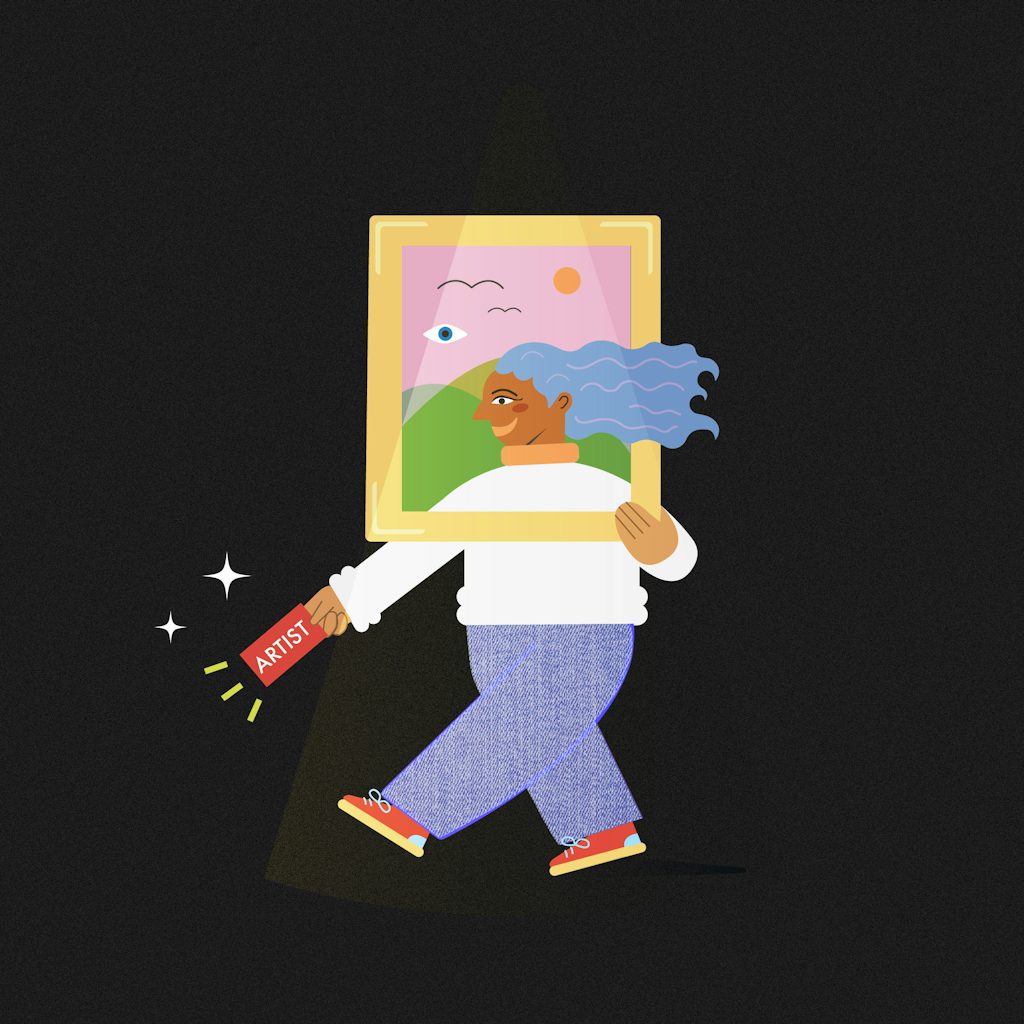There is not a one-on-one correspondence between art and consumer demand. This can be a source of uncertainty: “are people really waiting for this?”. At some point you have to present it, show what you can do. You’re giving something to the world and it’s important to generate interest in it.
Artists spend much of their time networking and promoting themselves. Marketing and promotion don’t come naturally to most artists. A bit introverted? Don’t worry, you can learn all that.
Networking: talk to strangers!
Don’t abuse your network by selling. Selling or winning an assignment can be a result of good networking. However, the main goal is to proactively share information and contacts without expecting anything in return.
Identify your network
List all the types of connections in your life: family, friends, professional, school, hobby, religion, social media, local, neighbours… All of these people can in turn link you with others. These are your so-called warm contacts. You know them well and can easily contact them.
Then there are also lukewarm and cold contacts. People you know from afar or not at all, but who you would like to get to know. You can also list these.
To make these cold contacts ‘warm’, you can purposefully visit places where these people (or their contacts) will be: premieres, events, vernissages, exhibitions, artists’ associations. Or you can take an online approach, via social media, platforms, Facebook groups… There is always someone who knows someone else.
Start from your interest in others: networking is then a natural process.
Give and take
Networking is giving and taking. When it comes to networking, there’s a difference between using someone as a ladder or a bridge. The intention is that the other party will also benefit from it. By sharing knowledge and contacts, you and the other people in your network can grow professionally and personally. You are helping each other. The basis of a good network is trust.
What do you actually want to achieve by networking?
In a way, quantity is important. The more connections, the wider the network and the greater the potential opportunities. In the beginning you may also not know who you should get to know best. You have to become ‘visible. Some contacts may also come in handy later, so don’t rule anyone out.
But quality also counts. Some contacts are of ‘higher quality’ because they could be crucial to your vision and mission. Getting to know them in a respectful and mutual way can be part of your strategy.
How do you let people know you exist?
What definitely not to do? Don’t peddle your portfolio or dossier. Don’t mail all programmers and galleries in Flanders and Brussels. That doesn’t work. Programmers and curators are inundated with such requests. They prefer to discover for themselves and use their own network to do so.
What can you do then?
RESEARCH
Do some research first: at which gallery, at which festival, with which management, with which collective… would your vision and mission fit? Look at who they supervise, which projects they set up and programme, and ask yourself if your story clicks with it.
Go to openings, premieres, creations: that will cost something, but you can budget for it. Talk to people, invite them for a more in-depth conversation, a performance or concert of yours, a studio visit if that fits. Think of ways you could assist others. Find common interests and ask for advice (not a job).
ELEVATOR PITCH
You need to learn to talk about your artistic practice. Can you tell us about your vision and mission in half a minute? That’s your elevator pitch. Make sure you have your story ready at networking moments. Also take your audience into consideration. What interests them?
DOSING
When it comes to promotion, it’s good to dose. Sometimes it’s better to wait a bit. If people are interested, you can start the conversation before you immediately put everything on the table. Also let others do the talking.
PROFESSIONAL SUPPORT
Fourth, you can rely on professional support and work with a gallery, promoter, producer, agent, PR agency or alternative management agency. In our database you’ll find a lot of help to reach your target group. Note that professional support comes at a price. Want to know more about the mediators in the arts field? Below we explain the help that is available.



